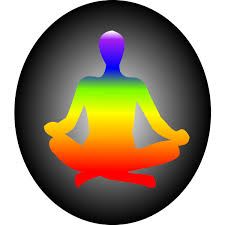Meditation
Loneliness Is Failed Solitude
Meditation as a way to personal and social transformation.
Posted December 19, 2022 Reviewed by Lybi Ma
Key points
- Meditation is a very simple practice, and choosing the right mantra is essential.
- The mantra has this gift of very gently and naturally, taking us into our hearts, the center of wholeness.
- One of the fruits of the practice of meditation is to discover that we are living, with an embodied mind.

How do we counteract the effects of stress on our existence at the molecular level? What are the concrete things we can do to actively promote more favorable gene expression, particularly in the immune system?
One possible answer, as Steve Cole, professor of medicine, psychiatry, and biobehavioral sciences at the UCLA School of Medicine has shown, is through mind-body practices like meditation. Cole’s research has linked meditation to higher antibody production, reduced negative inflammatory activity, increased positive antiviral response, and improved function of specific strains of immune cells.
Through a series of studies, Nobel laureate Elizabeth Blackburn, a biochemist at the University of California, San Francisco, and her colleague, psychiatrist Elissa Epel, found that meditation could affect the ends of DNA known as the telomeres, which act as protective caps for genes. Once a cell’s DNA loses its telomere it can no longer divide and dies. Massive cell death brings about aging. Telomeres, like immune cells, respond to emotions. Negative emotions shorten telomeres, while happy feelings and activities that promote relaxation, like meditation, help to maintain them.
I recently spoke to Fr. Laurence Freeman OSB, Director of the World Community for Christian Meditation (WCCM). Freeman meditates four times a day. Meditation is central and foundational to his life. He recommends that people meditate twice a day, morning and evening, which has a transformative effect on our sense of time and, and our way of living. One can meditate by oneself or within a community, Freeman's preference.
Meditation is a very simple practice. Many people, when they first begin, feel that they don't have time to meditate. But the time that they give to meditation comes back. It pays to be patient.
Usually, when you meditate, you sit down—though some people have engaged in walking meditation—you sit still, you breathe normally, and you close your eyes. And then you begin to repeat a word, or mantra, continuously, faithfully during the time of the meditation. In the beginning, you may find yourself getting distracted from saying the mantra and you start daydreaming, falling asleep, fantasizing, or chewing over your problems and anxieties. As soon as you realize this has happened, you drop the thought. And you return to the mantra.
The mantra over time, gently but very effectively, with regular practice, takes you as it were, from the head to the heart. And by heart, I don't mean just our emotional center. The heart, in the mystical tradition, is the spiritual point, a center of integration. In the heart, we find our essential wholeness.
Choosing the word for a mantra, a word that you focus on while meditating, is important. The mantra is usually a sacred word or a sacred phrase. This method of meditation is universally expressed in different ways, but essentially the same practice in all the major religious and spiritual traditions is not to give you something to think about. Quite the reverse. Its purpose is to lay aside your thoughts.
Freeman suggests the word maranasa made up of four syllables ma ra na sa as a mantra. In the Christian tradition, it means Come, Lord and is considered the oldest Christian prayer in the language Jesus spoke (Aramaic). But it also is fairly universal, because the syllables that you find in ma ra na sa is what the Indian tradition calls seed syllables that have a calming effect on the mind. And the four syllables also mean that you can say the mantra in rhythm with your breath. As you meditate, the breath becomes slower. And you find that you're saying the mantra more gently and subtly, and listening to it. And eventually, it may lead you into silence, complete silence. But by silence, I don't mean just feeling quiet and calm, which is a good thing. But also, by silence, I mean a place without thought or self-reflection.
And the interesting discovery is that when we enter solitude, for example, in the time of meditation, we leave images and conversations with ourselves behind then we find ourselves more and more deeply in this solitude. And the curious and wonderful discovery is that meditation leads us to a much deeper and richer sense of relationship with others.
Solitude is the cure for loneliness. Loneliness is a failed solitude. It's the failure or the inability to really be oneself and accept oneself in one's uniqueness. We embrace our own uniqueness by disregarding images, conversations with ourselves, or problem-solving as they arise.
We have this very Western attitude to be active, to do something, anything but to be still. Doing nothing is often considered passive, vulnerable, and accepting victimhood. With meditation, we need to focus on doing nothing, on the power of silence. Although it appears that meditation does nothing, the opposite is true. Meditation changes the meditator and changes us. By changing ourselves, we change others and the world. By focusing on silence in meditation, we can change our perspective.
Doing nothing, therefore, does produce results: it heals the wounds of division within ourselves. This is where we need to start. Doing nothing. Being rather than doing.
After continued practice, meditation may take us beyond the ego to what some call the spirit or the self. And this is where we really enter into a kind of embodied transcendence grounded in our own reality and reality itself.
References
Dalai Lama, Freeman, Laurence (2016). The Good Heart: A Buddhist Perspective on the Teachings of Jesus. Wisdom Publications.
Epel, E., Daubenmier, J., Moskowitz, J. T., Folkman, S., & Blackburn, E. (2009). Can meditation slow rate of cellular aging? Cognitive stress, mindfulness, and telomeres. Annals of the New York Academy of Sciences, 1172(1), 34-53.
Fang, C. Y., Reibel, D. K., Longacre, M. L., Douglas, S. D. et al., (2010). Enhanced psychosocial well-being following participation in a mindfulness-based stress reduction program is associated with increased natural killer cell activity. The Journal of Alternative and Complementary Medicine, 16(5), 531-538.
Freeman, Laurence (2021). Good Work: Meditation for Personal & Organisational Transformation. Kindle edition
Morgan, N., Irwin, M. R., Chung, M., & Wang, C. (2014). The effects of mind-body therapies on the immune system: meta-analysis. PLoS One, 9(7), e100903.
Pace, T. W., D., Cole, S. P., Raison, C. L. et al., (2009). Effect of compassion meditation on neuroendocrine, innate immune and behavioral responses to psychosocial stress. Psychoneuroendocrinology, 34(1), 87-98.




